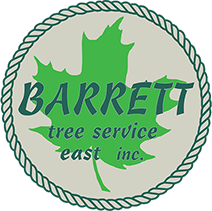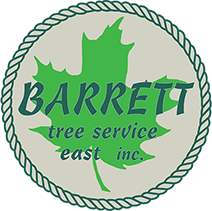Tar spot is a common foliar disease on Norway maples and can be particularly pronounced in years with extended wet spring weather. Fortunately, the damage caused is generally considered to be a cosmetic problem, rather than detrimental to tree health. The tar spot is typically seen on maple trees and is caused by several related fungi (Rhytisma acerinum, R. americanum and R. punctatum) that produce black lesions on the upper surface of leaves. While tar spot can affect many species, it is most common on Norway, silver, and red maples.
Symptoms The first symptoms of infection begin to show in late spring through early summer as small pale yellow spots and often go unnoticed until mid to late summer as the darker coloration of the spots becomes more apparent. Development and size of the spots vary by pathogen and range from tiny spots to larger dark lesions 1” or more in diameter.
Heavy infections can cause early leaf drop which often causes concern as lawns and landscapes become littered with leaves prior to the autumn raking season. Late summer leaf drop is typically not significant enough to harm the host tree.
Management Current research has shown that the tar spot fungi do not cause long-term damage to the host tree. The most effective management practice in home landscapes is to rake and dispose of the leaves as they fall. The black spots contain fungal spores that will survive the winter season. Disposing of infected leaf litter helps to reduce available inoculum on site. In the following spring, wind and rain release the spores to infect the newly emerging foliage. Composting leaves may not be effective, because home compost piles seldom reach temperatures high enough to destroy fungal spores.
Application of fungicides may be desired when high levels of infection become unacceptable, however, control of the disease is difficult. If fungicides are used, applications may be needed for most years and the cost of treatment may outweigh the benefits.
If you have concerns about your foliage's health and vitality, consult one of BTSE’s Certified Arborists to discuss plant healthcare strategies to best care for your trees.

